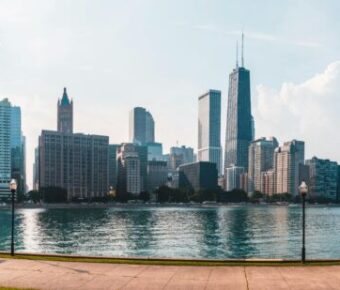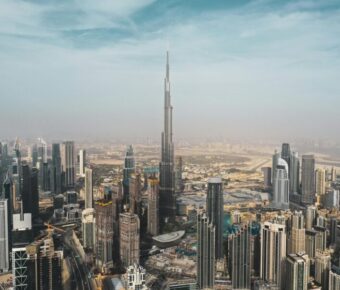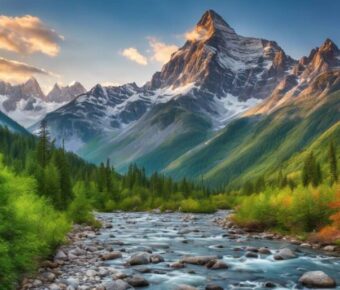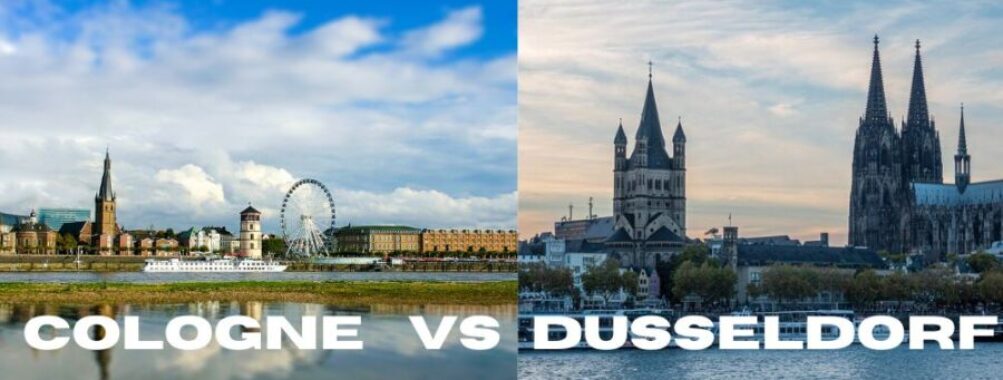
Cologne vs Dusseldorf: A Local’s Guide to Choosing Between These Rival Rhine Cities
Cologne and Düsseldorf sit just 40 kilometers apart along the Rhine River in Germany’s North Rhine-Westphalia region. These rival cities have distinct personalities that make choosing between them a common challenge for travelers.
For most visitors, Cologne offers better value with its iconic cathedral, walkable historic center, and world-class museums, while Düsseldorf appeals more to luxury travelers seeking high-end shopping and modern architecture.
Both cities showcase different sides of German culture through their local traditions, food, and drink. Cologne takes pride in its 2,000-year history and relaxed vibe, with locals gathering to enjoy the city’s famous Kölsch beer. Düsseldorf presents a more polished atmosphere with its fashion boutiques, contemporary art scene, and elegant riverside promenade.
Many travelers find themselves torn between booking hotels in Cologne or Düsseldorf. Choosing the right city comes down to personal interests and travel style. A traveler’s budget often plays a key role since Düsseldorf tends to have higher prices for accommodations and dining compared to Cologne’s more modest costs.
Table of Contents
- Historical Insights
- Cologne’s Rich Past
- Düsseldorf’s Development
- Cultural Explorations
- Art and Museums in Düsseldorf
- Cologne’s Music and Media Influence
- Urban Life and Attractions
- Shopping Destinations
- Unique Neighborhoods
- Landmarks and Architecture
- Culinary Delights
- Dining in Cologne
- Düsseldorf’s Gastronomy
- Lifestyle and Leisure
- Nightlife and Entertainment
- Outdoor Activities and Parks
- Daily Living and Transportation
- Commuting in the Cities
- Affordability and Housing
- Frequently Asked Questions
- What are the key differences in the cost of living between Cologne and Düsseldorf?
- How do the Christmas markets in Cologne compare to those in Düsseldorf?
- Can you describe the contrasts in nightlife between Cologne and Düsseldorf?
- For tourists, which city is recommended for a stay, Cologne or Düsseldorf, and why?
- Regarding city size and population, how does Cologne stand in comparison to Düsseldorf?
- How does the cultural and artistic scene differ between Cologne and Düsseldorf?
- Book Your Dream Experience
- More Travel Guides
Historical Insights
These two Rhineland cities evolved along very different paths, with Cologne’s ancient Roman roots contrasting sharply with Düsseldorf’s more recent rise to prominence.
Cologne’s Rich Past
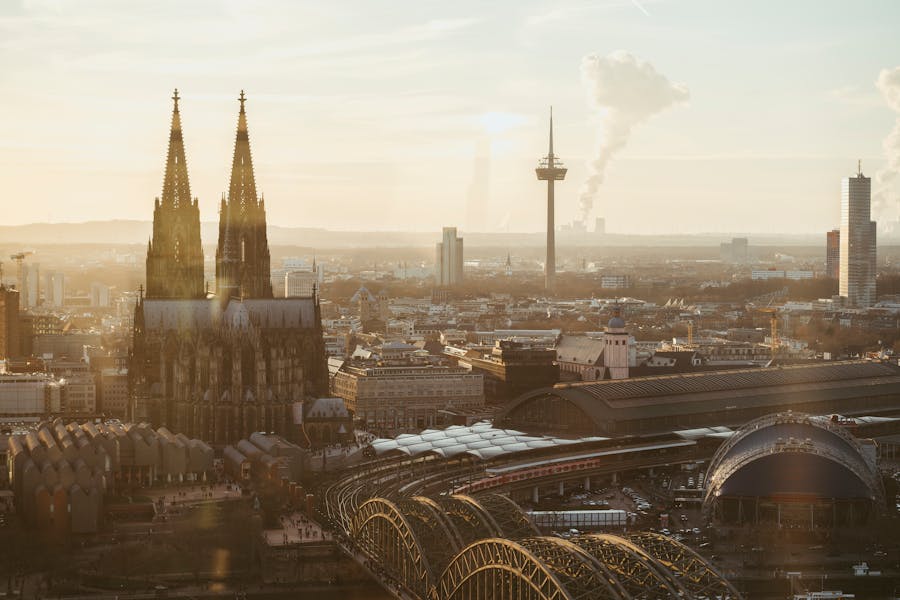
Cologne’s story started around 50 AD as a Roman colony. The city grew into one of the most important trade centers in medieval Europe thanks to its prime location on the Rhine River. The magnificent Cologne Cathedral, started in 1248, stands as proof of the city’s historic wealth and power.
The city earned status as a Free Imperial City, giving it special rights and privileges. This meant Cologne could mint its own coins and make its own laws. Trade routes brought spices, silk, and other valuable goods through its ports.
World War II damaged much of Cologne’s historic buildings. The Cathedral amazingly survived despite taking 14 bomb hits. After the war, the city rebuilt while keeping its ancient Roman street layout and medieval landmarks.
Düsseldorf’s Development
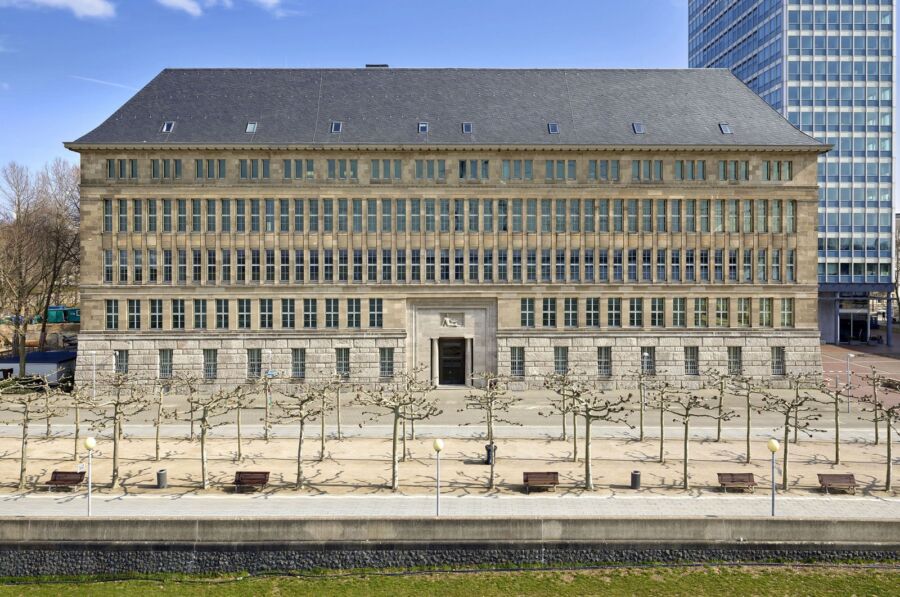
Düsseldorf started as a small fishing village in the 7th century. The settlement grew slowly until 1288 when it got city rights. Its big break came in 1380 when it became the capital of the powerful Berg region.
The city really took off in the 1800s during the Industrial Revolution. New factories and businesses brought wealth and growth. Unlike Cologne’s focus on preserving history, Düsseldorf chose a modern path after World War II.
Today’s Düsseldorf mixes some historic areas with bold new architecture. The famous Rhine Tower and the twisted Gehry buildings show how the city embraces the future. The Altstadt (Old Town) keeps bits of medieval charm while the rest of the city pushes forward with glass and steel designs.
Cultural Explorations
Both cities showcase rich artistic heritage and cultural innovation that shapes modern German culture. The vibrant art galleries and music scenes create unique experiences for visitors seeking creative inspiration.
Art and Museums in Düsseldorf
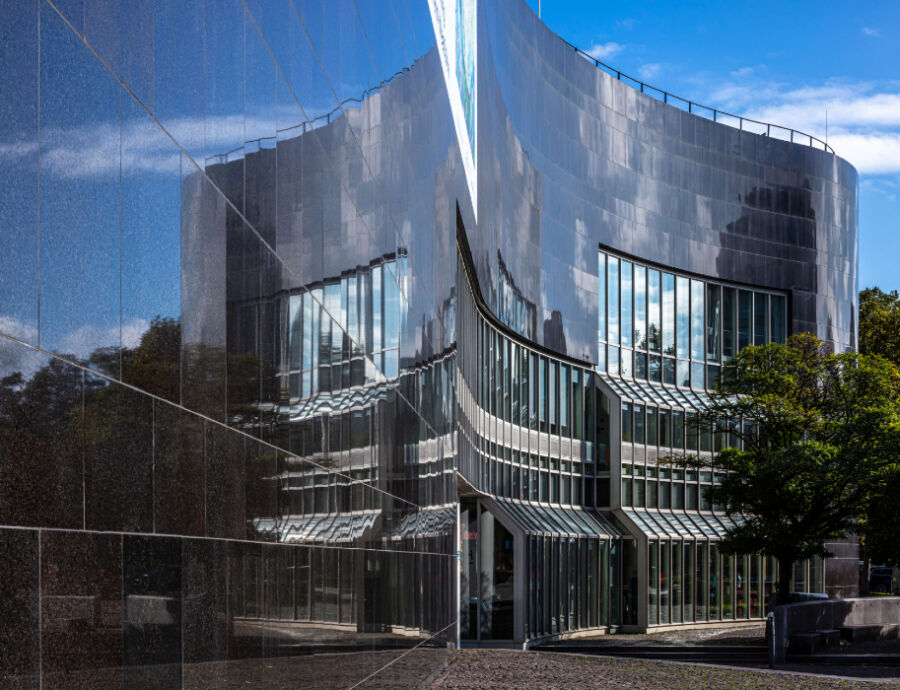
The Kunstsammlung Nordrhein-Westfalen stands as the crown jewel of Düsseldorf’s art world. This museum houses an impressive collection of modern and contemporary art, including works by Paul Klee and Pablo Picasso.
The city’s art scene thrives in the MedienHafen district, where old warehouses now display cutting-edge exhibitions. Street art adds splashes of color to the urban landscape.
Local galleries cluster around Königsallee, making it easy to explore multiple exhibitions in one afternoon. The area hosts regular art walks where visitors can meet artists and gallery owners.
Cologne’s Music and Media Influence

Cologne’s Museum Ludwig holds one of Europe’s largest Pop Art collections. The museum sits near the famous Kölner Dom, creating a striking contrast between classical and modern art.
The city serves as Germany’s media capital, hosting major broadcasting networks and production studios. This concentration of creative talent fuels a dynamic music scene.
Local clubs and concert venues showcase everything from electronic music to classical performances. The annual c/o pop festival brings together emerging artists and established musicians.
Underground music venues in the Belgian Quarter attract both locals and tourists. These intimate spaces offer authentic experiences of Cologne’s thriving indie music culture.
Urban Life and Attractions
Both Cologne and Düsseldorf offer distinct urban experiences that showcase German culture, art, and architecture. Each city brings its own flavor of shopping, unique districts, and stunning landmarks that tell different stories of their past and present.
Shopping Destinations
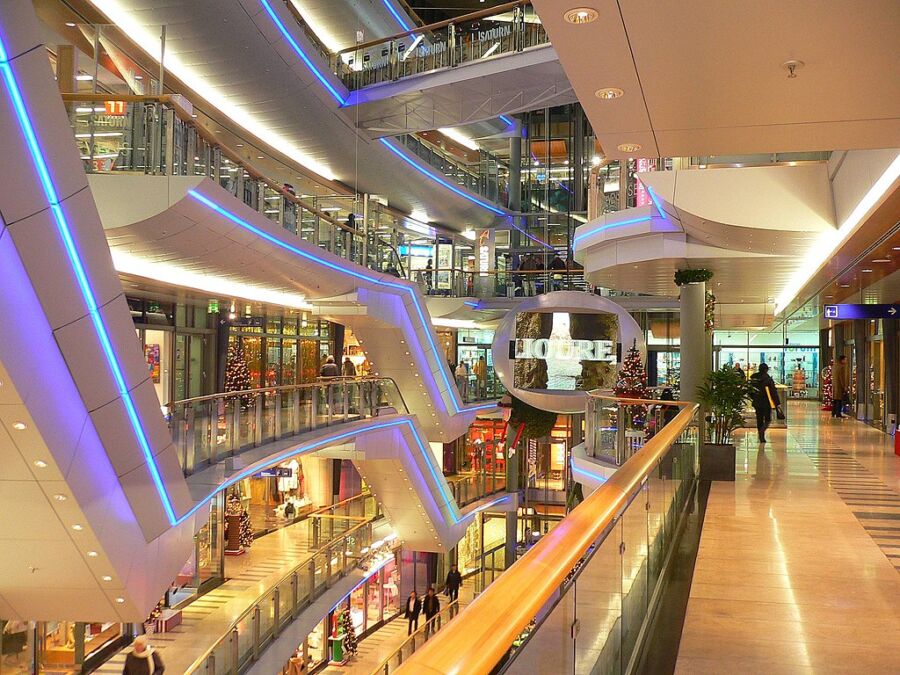
Cologne’s main shopping area centers around Schildergasse, one of Germany’s busiest shopping streets. The street buzzes with major retail chains, boutiques, and specialty shops.
The Belgian Quarter mixes vintage stores with trendy cafes and indie fashion boutiques. Small designer shops dot the side streets, perfect for finding unique pieces.
Düsseldorf’s Königsallee (known as “Kö”) stands as Germany’s most famous luxury shopping boulevard. High-end fashion brands line both sides of the tree-lined canal.
The city earned its spot as a fashion capital thanks to its twice-yearly fashion shows and designer presence.
Unique Neighborhoods
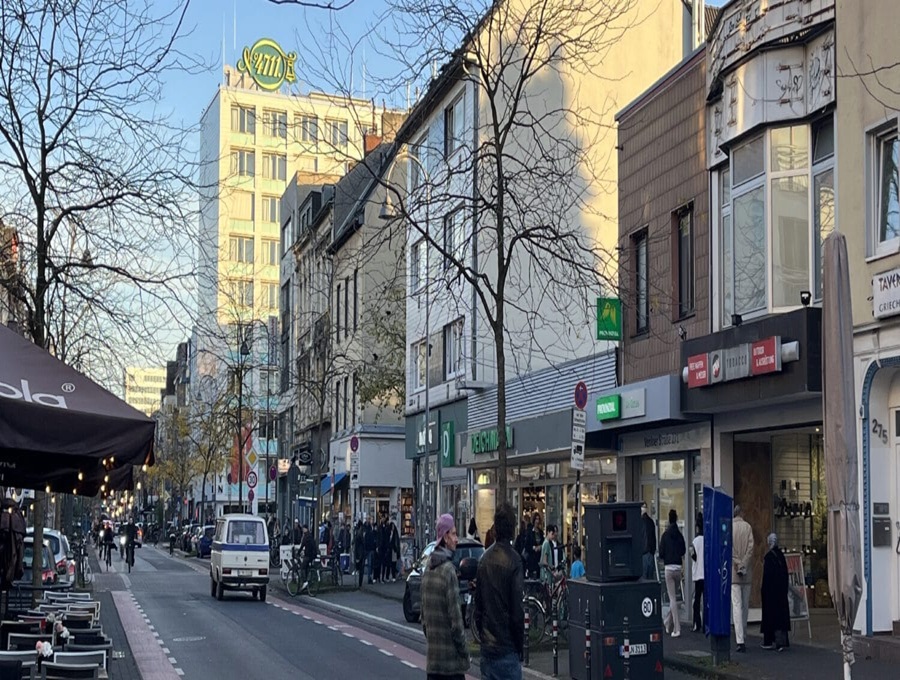
The Altstadt (Old Town) in Düsseldorf comes alive at night with over 300 bars and restaurants. Its narrow cobblestone streets give it the nickname “the longest bar in the world.
Cologne’s Belgian Quarter charms visitors with art nouveau buildings and creative energy. Local designers, artists, and café owners give this area its distinctive character.
Ehrenfeld district represents Cologne’s creative spirit. Street art covers buildings while indie shops and music venues attract a young crowd.
Landmarks and Architecture
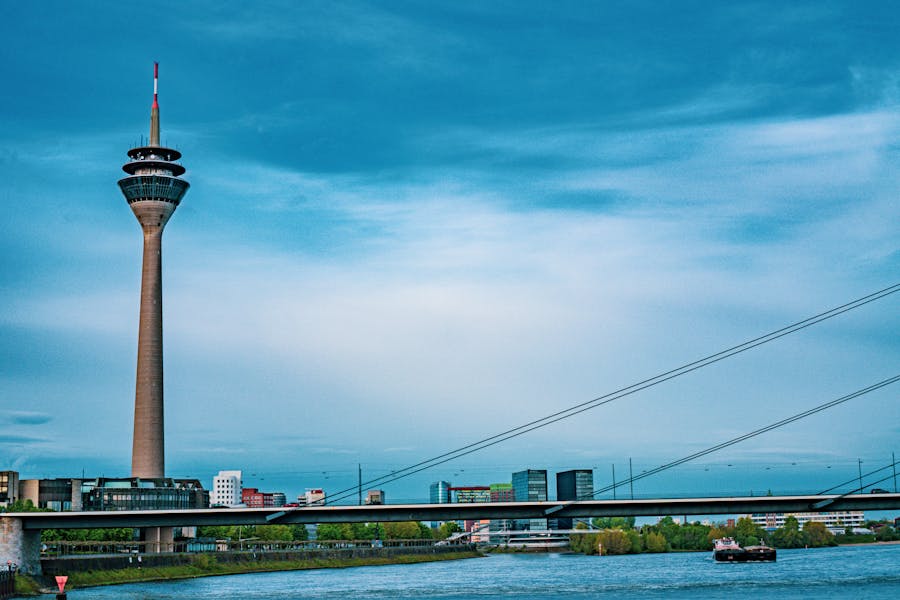
The Gothic Cologne Cathedral dominates the city skyline. Its twin spires reach 157 meters high, making it impossible to miss from anywhere in the city center.
The Hohenzollern Bridge, covered in thousands of love locks, spans the Rhine River. Trains and pedestrians cross while enjoying views of the cathedral.
Düsseldorf’s Rhine Tower provides panoramic city views from its observation deck and rotating restaurant.
The Neuer Zollhof complex by Frank Gehry showcases modern architecture at its finest. Three twisted buildings in different materials create an unforgettable sight along the Rhine promenade.
Culinary Delights
Both Cologne and Düsseldorf pride themselves on distinct food cultures that showcase the best of German cuisine, with each city offering its own special beers and local specialties.
Dining in Cologne
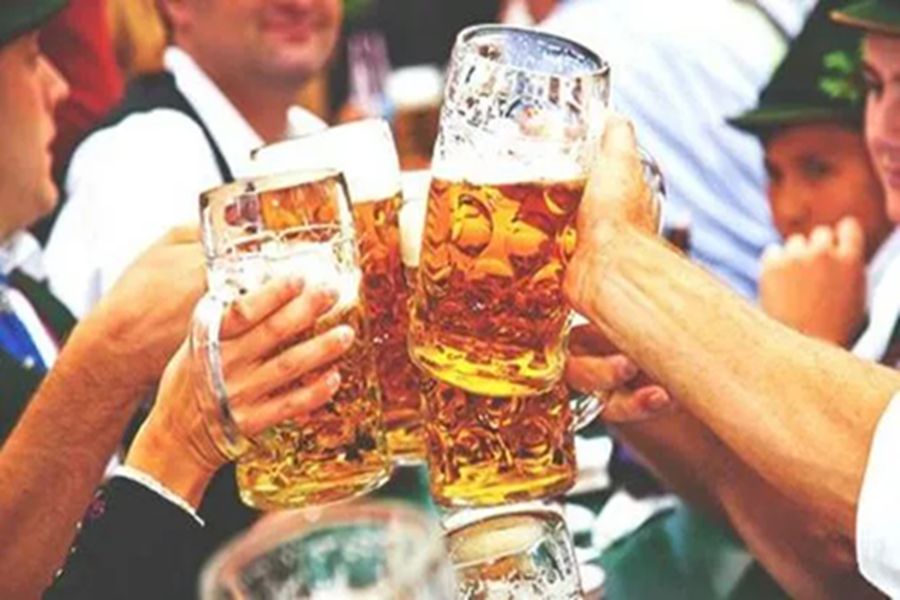
Cologne’s food scene centers around its famous beer halls and traditional restaurants. The city’s signature drink is Kölsch, a light and crisp beer served in tall, narrow 0.2L glasses called Stangen.
The historic Früh am Dom brewery serves classic Rheinischer Sauerbraten, a sweet-sour marinated pot roast that’s a must-try local dish. Many locals grab lunch at the busy Altstadt beer halls, where servers known as Köbes keep the Kölsch flowing.
Traditional pubs called Brauhäuser dot the city center. Peters Brauhaus and Gaffel am Dom rank among the most popular spots to sample authentic Cologne cooking paired with fresh-brewed Kölsch.
Düsseldorf’s Gastronomy
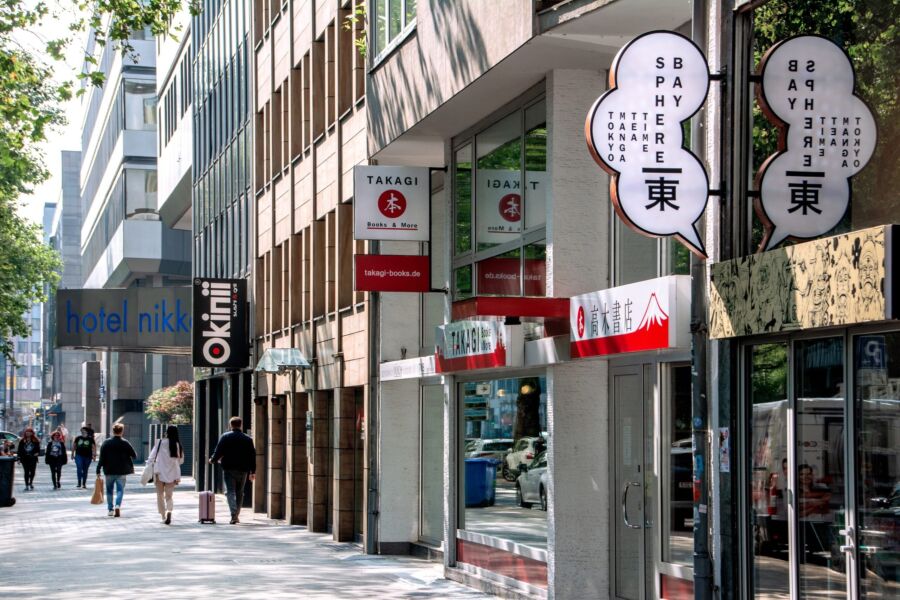
Düsseldorf matches its rival with Altbier, a darker, hoppier brew than Kölsch. The best place to try it is in the Altstadt’s historic Hausbrauereien like Uerige and Füchschen.
The city boasts Europe’s largest Japanese community outside of London, which means excellent sushi and ramen restaurants, especially along Immermannstraße in Little Tokyo.
Fine dining flourishes here too. The Media Harbor area houses several Michelin-starred restaurants serving creative German cuisine with modern twists.
Local specialties include Himmel un Äd (black pudding with mashed potatoes and apple sauce) and Düsseldorfer Senf, a unique sweet-spicy mustard that pairs perfectly with wursts and pretzels.
Lifestyle and Leisure
Both Cologne and Düsseldorf offer vibrant social scenes with distinct cultural flavors. Each city brings its own unique mix of entertainment spots, green spaces, and outdoor activities that keep locals and visitors busy year-round.
Nightlife and Entertainment
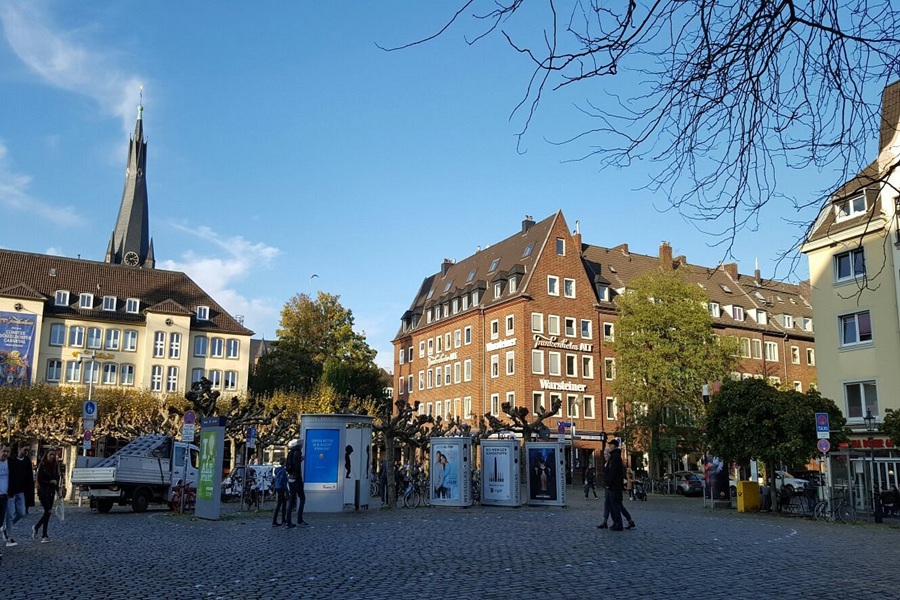
Cologne’s nightlife centers around the Belgian Quarter and Zülpicher Straße, where cozy bars serve the city’s famous Kölsch beer. The bars here stay open late, with many spots featuring live music and local DJs.
The city comes alive during Carnival season, when the streets fill with costumed revelers and traditional music. You’ll find dozens of brauhaus (traditional brewhouses) scattered throughout the Old Town.
Düsseldorf’s party scene focuses on the famous Altstadt (Old Town), nicknamed “the longest bar in the world” with over 300 bars and clubs packed into one area. The city’s nightlife tends to be more upscale than Cologne’s casual vibe.
Outdoor Activities and Parks
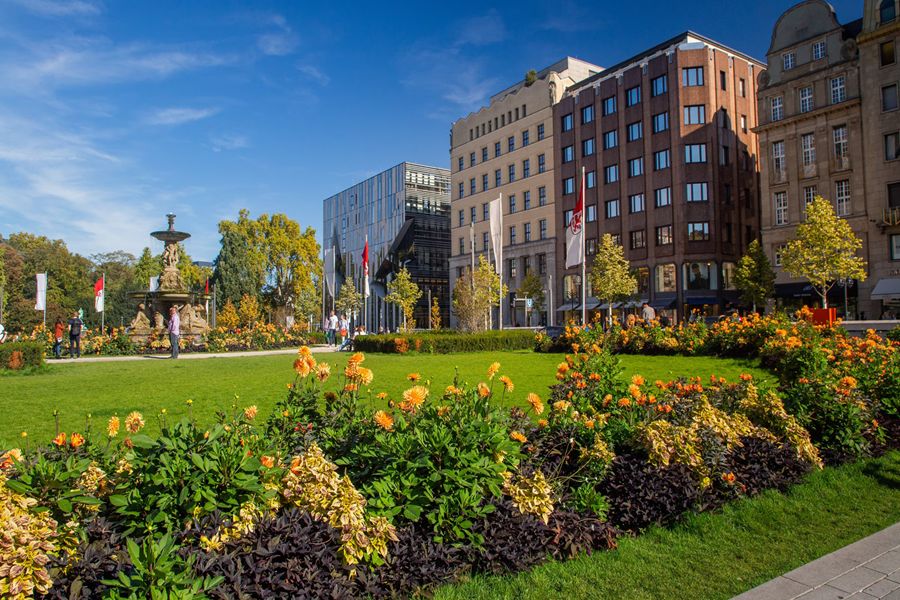
The Rhine River promenade in Düsseldorf provides a perfect spot for walking, jogging, or cycling. The city’s Hofgarten park offers peaceful paths and beautiful flower gardens in the heart of town.
Cologne features several large green spaces like the Rheinpark, which offers stunning river views and family-friendly attractions. The city’s bike paths connect major parks and neighborhoods.
Both cities maintain extensive riverside paths that are perfect for cycling or evening strolls. Düsseldorf’s Südpark features Japanese gardens and outdoor sports facilities, while Cologne’s Flora botanical garden showcases exotic plants year-round.
Daily Living and Transportation
Living costs and daily commuting shape the experience in both cities. Cologne offers more affordable housing and living expenses, while Düsseldorf maintains higher-end prices but provides extensive transportation options.
Commuting in the Cities
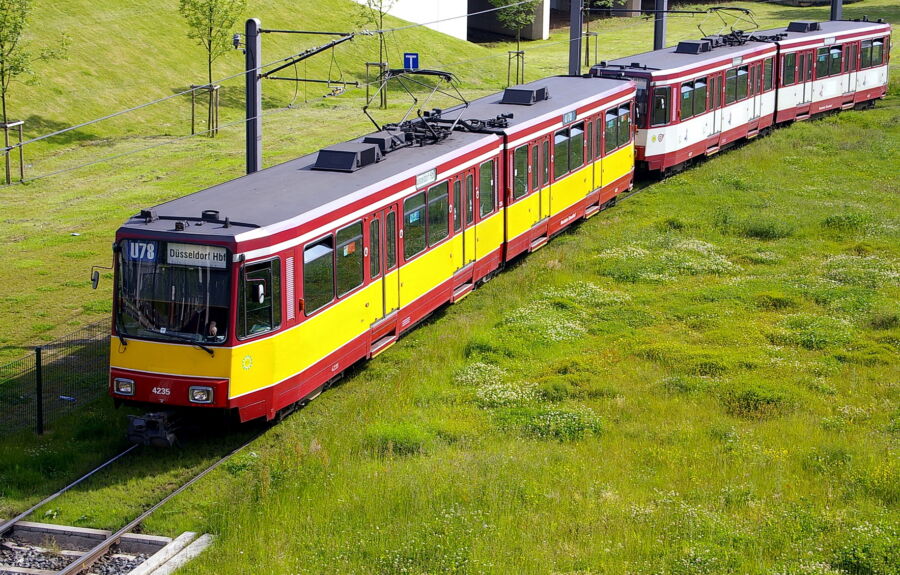
Both cities have excellent public transport networks. The S-Bahn connects major areas, with trains running every 10-15 minutes during peak hours.
Düsseldorf’s transport system is slightly newer and cleaner. The city features wide bike lanes and pedestrian zones, making it easy to get around without a car.
Cologne’s transport network covers more ground with its larger size. The city’s tram system reaches most neighborhoods, and bike paths follow the Rhine River for scenic commuting.
Affordability and Housing
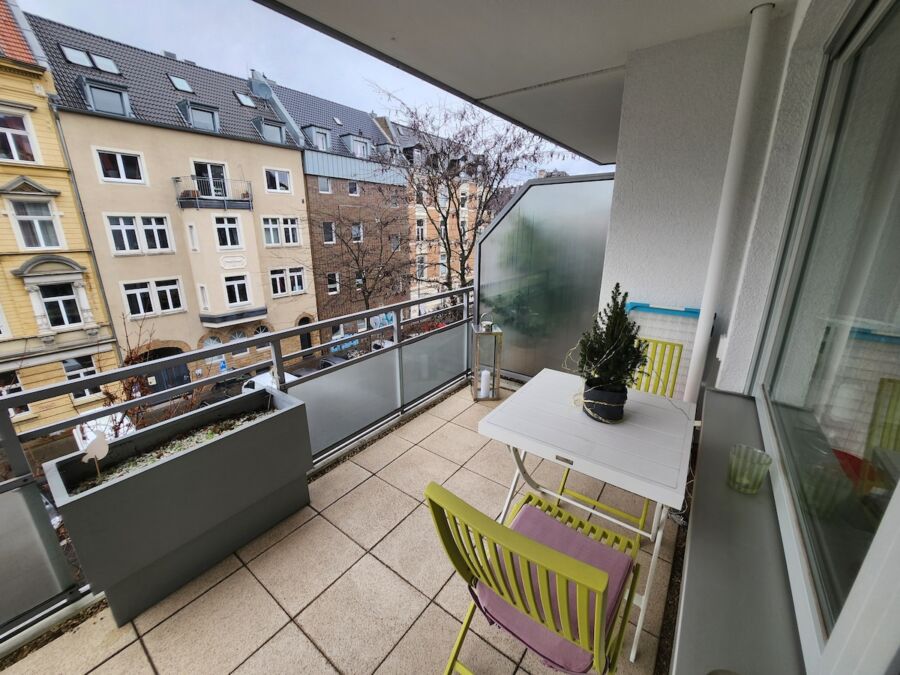
Monthly rent in Cologne averages €1,851, which is slightly lower than Düsseldorf’s €1,861. A one-bedroom apartment in Cologne’s city center costs about €950-1,200.
Düsseldorf’s housing market targets luxury and upscale living. Many expats choose the Media Harbor or Oberkassel areas, where rents can reach €1,500 for similar accommodations.
Basic utilities cost less in Cologne. Monthly bills for electricity, heating, and water run about €200, while Düsseldorf residents pay closer to €230.
Transportation costs favor Cologne with monthly passes priced at €90. Düsseldorf’s passes cost around €105, though the system offers more premium services.
Frequently Asked Questions
Cologne and Düsseldorf offer distinct experiences in costs, culture, and attractions. These cities, just 35 kilometers apart, attract visitors with their special mix of history and modern life.
What are the key differences in the cost of living between Cologne and Düsseldorf?
Düsseldorf tends to be more expensive for housing and dining out. The city’s status as a business hub drives up prices, especially in the fancy Königsallee area.
Cologne offers more budget-friendly options for food and accommodation. Students and young professionals often pick Cologne for its lower living costs.
How do the Christmas markets in Cologne compare to those in Düsseldorf?
Cologne hosts seven main Christmas markets, with the most famous one near the Cathedral. The markets feature local crafts, traditional music, and the city’s special Kölsch beer.
Düsseldorf’s markets spread across several neighborhoods, each with its own theme. The markets here are less crowded than Cologne’s, making for a more relaxed shopping experience.
Can you describe the contrasts in nightlife between Cologne and Düsseldorf?
Cologne’s nightlife centers around the Belgian Quarter and Zülpicher Straße. The city is famous for its casual beer halls and student-friendly bars that serve Kölsch.
Düsseldorf’s Altstadt, nicknamed “the longest bar in the world,” packs 300 bars into one area. The scene here leans more upscale, with craft cocktail spots and wine bars.
For tourists, which city is recommended for a stay, Cologne or Düsseldorf, and why?
I recommend Cologne for first-time visitors to Germany. Its massive Gothic cathedral, numerous museums, and walkable center make sightseeing easy.
Düsseldorf suits travelers looking for modern architecture and high-end shopping. The Rhine promenade and Media Harbor offer great photo spots.
Regarding city size and population, how does Cologne stand in comparison to Düsseldorf?
Cologne is the larger city with about 1 million residents. Its area spans both sides of the Rhine River, with many distinct neighborhoods.
Düsseldorf has roughly 620,000 people. The city feels more compact and manageable for short visits.
How does the cultural and artistic scene differ between Cologne and Düsseldorf?
Cologne excels in classical art and history. Its museums showcase everything from Roman artifacts to medieval religious art.
Düsseldorf focuses more on modern and contemporary art. The K20 and K21 museums lead the city’s art scene, while the fashion industry adds to its creative energy.
